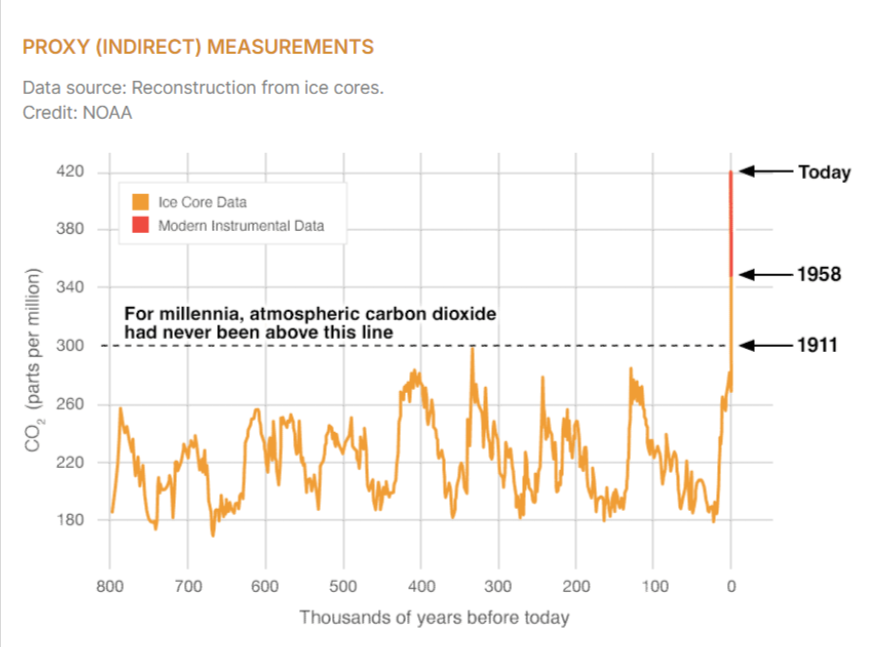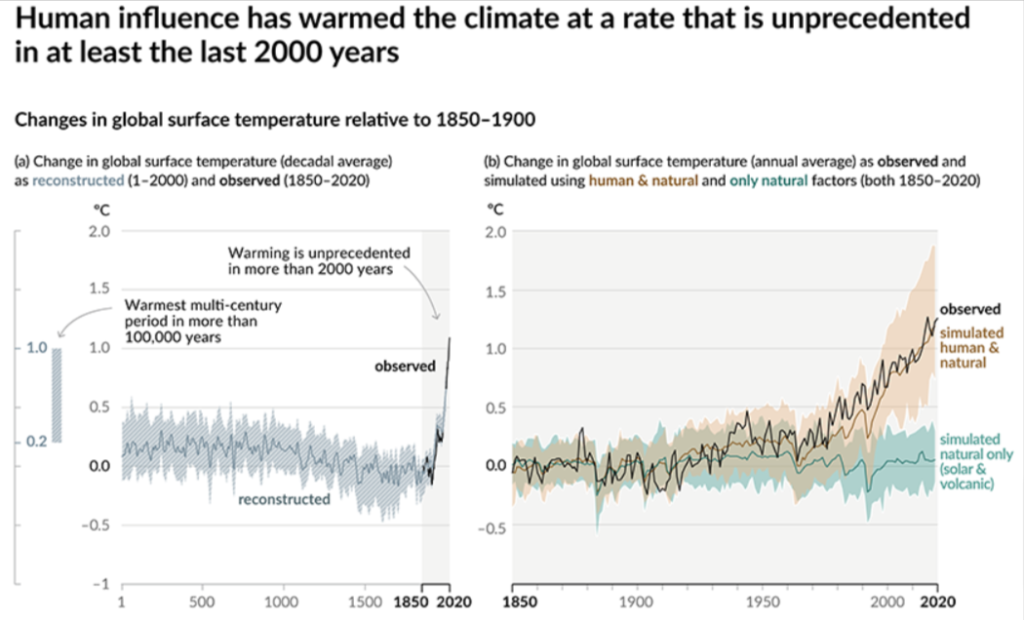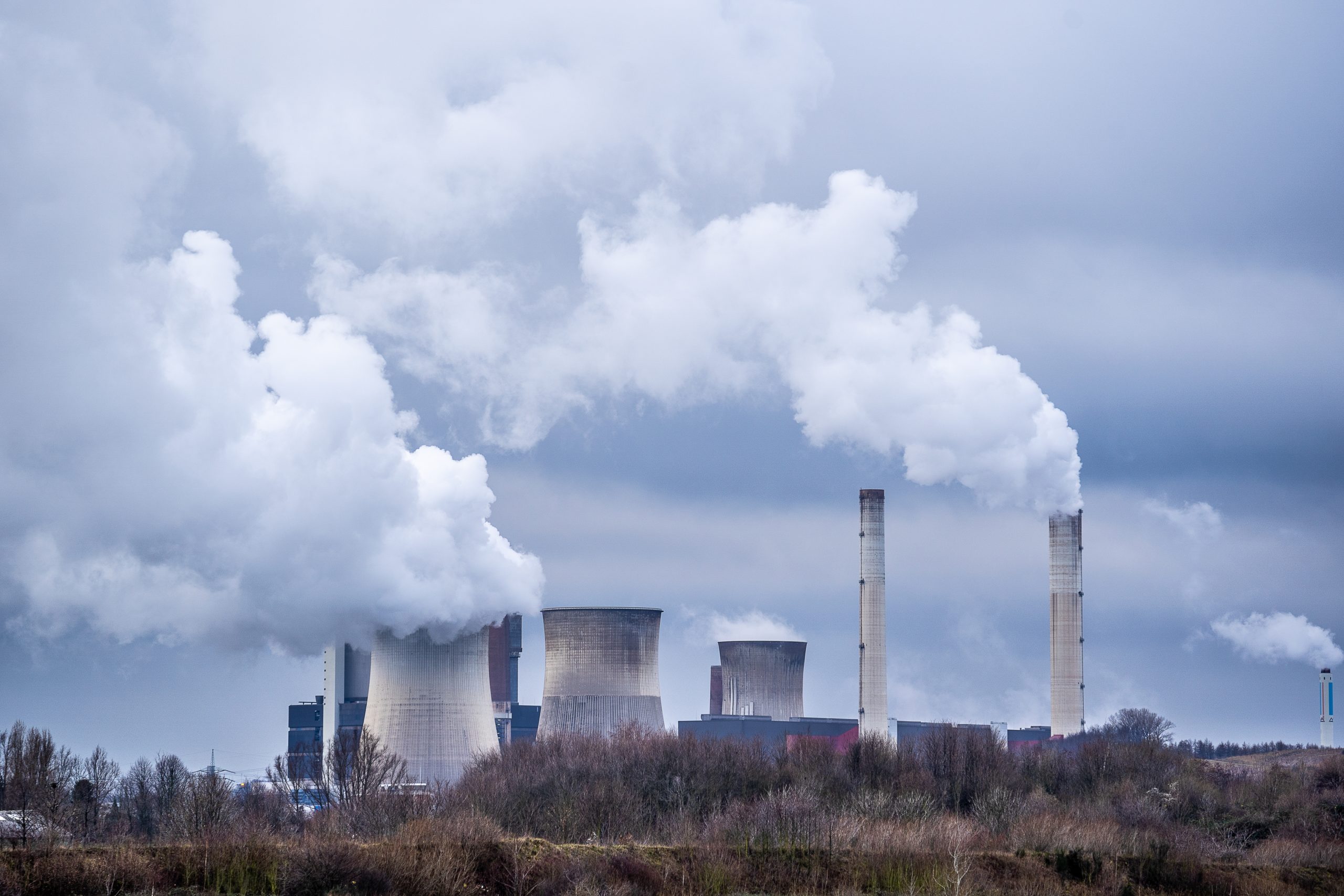Original article (in Serbian) was published on 9/8/2024; Author: Milica Ljubičić
While the scientific community has been warning for decades about the increase in greenhouse gas emissions as a result of human activity, which is why the average temperature on Earth has risen by 1.1 degrees over the last 140 years, climate change deniers insist on their “arguments”. These days, they are using a new study in which it is claimed that the temperature actually affects the increase of carbon dioxide on Earth, and that the burning of fossil fuels as the cause of warming is a “narrative”. The controversial domestic web portal Nulta tacka used the findings of that work to claim that carbon dioxide does not cause global warming. What does the mentioned study say, and what does the scientific community actually say?
A recently published paper denying that the concentration of carbon dioxide affects the rise in temperature on Earth has drawn the attention of climate skeptics, who are now using it as “proof” that climate change does not exist.
The website known for its conspiracy theories Slay News recently wrote about the results of that work, and the Serbian web portal Nulta tacka also took over that text. “Claims that ‘carbon emissions’ cause ‘global warming’ are false”, states Nulta tacka in the headline of an article published on August 5.
In the text, they state that the study was done by “excellent researchers in Greece”, however, it has only one author.
Namely, the paper titled “Stochastic assessment of temperature–CO2 causal relationship in climate from the Phanerozoic through modern times” was published in July of this year in AIMS press. The connection between the increase in temperature and the concentration of carbon dioxide from the distant past of the Earth to the last few decades was examined.
The conclusion states that “although there is a correlation between temperature and the concentration of carbon dioxide in the atmosphere, it is temperature that leads, while CO2 lags behind. That is, the direction of causality is the opposite of what has been promoted in recent decades”.
In other words, the paper denies that carbon dioxide causes a global increase in temperature on Earth, but insists on the opposite – that changes in temperature cause an increase in carbon dioxide. The author of the study, Demetris Koutsoyiannis, a Greek hydrologist and professor emeritus at the National Technical University of Athens, claims that this applies not only to the climate in the past but also to the last few decades.
It is not the first time that Koutsoyiannis has made claims that temperature affects carbon dioxide levels, and not the other way around. The same conclusions can be found in his other works.
The paper denies what has been proven repeatedly – that the burning of fossil fuels has contributed to global warming, calling it a “narrative” and an “unscientific question”. “Such claims are based on imagination and climate models that are full of assumptions”.
At the end of the study, it is stated that it was conducted out of “pure scientific curiosity”. The author would like to thank the anonymous blogger, whose data he used, as well as the anonymous reviewers of the study.
Science, however, shows that the relationship between temperature and carbon dioxide is still different today compared to millions of years ago, a professor from the Institute of Meteorology of the Faculty of Physics in Belgrade and a researcher of the “Extremes” project, which examines the impact of climate change, Vladimir Djurdjevic explained to Raskrikavanje.
The Earth’s climate has changed during its multimillion-year history, and it has gone through ice ages that are associated with a global drop in temperatures.
Ice ages are “interrupted” by interglacial periods in which temperatures rise. Today we live in an interglacial period called the Holocene, which began about 11,700 years ago.
The transition from the ice age to the interglacial age is initiated by slow changes in the movement of the Earth, which are known as the Milankovic cycles. These changes initiated it to begin to heat up, with certain parts of it receiving more solar energy.
“The initial warming due to the change in the Earth’s position will trigger a feedback loop that will leave even more heat on the planet because the ice will slowly begin to melt. Then another feedback loop is triggered which reduces the ocean’s ability to absorb carbon dioxide”, says Professor Djurdjevic.
The warmer the ocean, the less its ability to absorb carbon dioxide. “A part of the carbon dioxide that was “trapped in the ocean” during the ice age, i.e. dissolved in the ocean, will return to the atmosphere and this carbon dioxide will increase the greenhouse effect and further increase the warming”.
Professor Djurdjevic says that data several million years old (paleodata) really show that the initial trigger of warming on Earth was a rise in temperature, then the ice melts and the concentration of carbon dioxide begins to rise. “But when part of that initial warming passes, carbon dioxide, which has moved from the ocean into the atmosphere, starts to be the leading signal. So, in the beginning, CO2 lags behind, and then slowly it synchronizes with the temperature, and even goes ahead of the temperature”.
Therefore, the paleodata leads to the conclusion that initially the temperature encourages an increase in the concentration of carbon dioxide. However, according to Djurdjevic, these data cannot be applied today to short periods of time in which changes occur very quickly. Changes in the past happened much more slowly.
“If the result of this work were correct, it would mean that since the concentration of carbon dioxide increases every year, the temperature should rise non-stop, more and more, and thus cause more and more carbon dioxide”. This is not the case though.
Djurdjevic specifies that the average temperature increases in the long term, but it does not increase every year at the same rate, one year it increases a little more, the next a little less, while the concentration of carbon dioxide increases linearly.
Professor Djurdjevic believes that this work is “complex to the physical understanding of the climate system”.
“Today we know what the problem is – how the climate system works, how the greenhouse effect works, we know which gas and how much it contributes to the warming of the planet. We know how much carbon dioxide people emit annually, how much fossil fuel is burned, and we know how much this contributes to the increase in the concentration of carbon dioxide in the atmosphere”. All this is not taken into account in this paper.
What is the relationship between temperature and carbon dioxide?
Today’s findings show that carbon dioxide is one of the greenhouse gases that contributes to the warming of the planet and that it is released, among other things, by the emission of fossil fuels.
It is known that its presence has changed in the past, and the reconstruction of the relationship between temperature and carbon dioxide of ice lakes in Antarctica has contributed to a better understanding of the cycle of ice ages and the role of this gas in them.
A study published in the prestigious journal Nature in 2012 revealed that carbon dioxide initially lagged behind the temperature in the southern hemisphere when it came out of the ice age. But it was different in the northern hemisphere of the Earth – that global temperatures lagged behind carbon dioxide, that is, that the warming occurred after the increase in the concentration of carbon dioxide.
A study from 2016, also published in the journal Nature, shows that for the last 150 years, carbon dioxide has been the cause of global warming as a result of human activity, while natural factors (solar energy and volcanic eruptions) contribute slightly. It is noted that in the paleoclimatic data, the direction was the opposite, i.e. the temperature caused changes in the concentration of greenhouse gases.
The director of the Department of Earth Science from NASA, Peter Hilderbrand, also states the same – that in the pre-industrial period, carbon dioxide also increased with the rise in temperature, while in the post-industrial age, it is the opposite – “an increase in carbon dioxide in the atmosphere leads to a rise in temperature”.
The American space agency NASA states that “human activities have increased the concentration of carbon dioxide in the atmosphere by 50 percent in less than 200 years”.

The graph shows the historical changes in the concentration of carbon dioxide, whereby the increase in its concentration can be seen today.
NASA also explained that solar energy is not the cause of global warming in recent decades. “The warming is too great to be related to solar activity”. Since 1978, scientists have been monitoring the amount of solar energy reaching the planet through sensors on satellites, and according to their data – there has been no increase. Besides – if the Sun was responsible for global warming, the heat would be in the layers of the atmosphere, not near the surface of the Earth.
The UN’s Intergovernmental Panel on Climate Change (IPCC) states that it is “unequivocally clear” that humans cause climate change through their activities, such as burning fossil fuels and impacting the land. The IPCC notes that in addition to carbon dioxide, the release of other greenhouse gases such as methane also contributes to global warming.

The left graph shows the Earth’s temperature up to 1850 and how it then began to rise, while the right graph shows the difference in warming that comes from natural factors and that caused by human activities.
The National Oceanic and Atmospheric Administration (NOAA) notes that in 1958 the concentration of carbon dioxide in the atmosphere was 315 ppm, while in 2021 it was already 419 ppm.



